Avocado can go straight into your compost to allow the soil bacteria and worms to break it down into nutrient rich humus. Avocado will be broken down in compost bins, compost piles on the ground or even compost bags. Prepare the avocado by cutting the skins into small pieces. This will help it to break down quicker.
This article will explore how to compost avocado at home in a compost bin or pile. Find out how to break down avocado seeds, flesh and skins quickly.
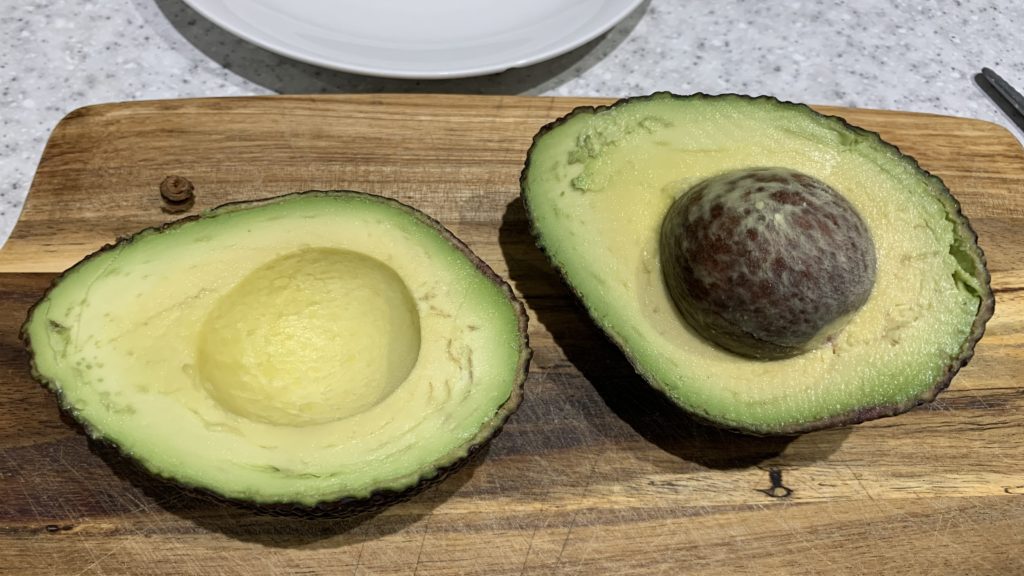
How to compost avocado at home
Avocado can be composted at home. The flesh is soft so breaks down quickly and add lots of valuable nutrients to your soil. Here are my easy steps to compost avocado at home to avoid attracting pests and creating bad smells.
1. Remove the sticker
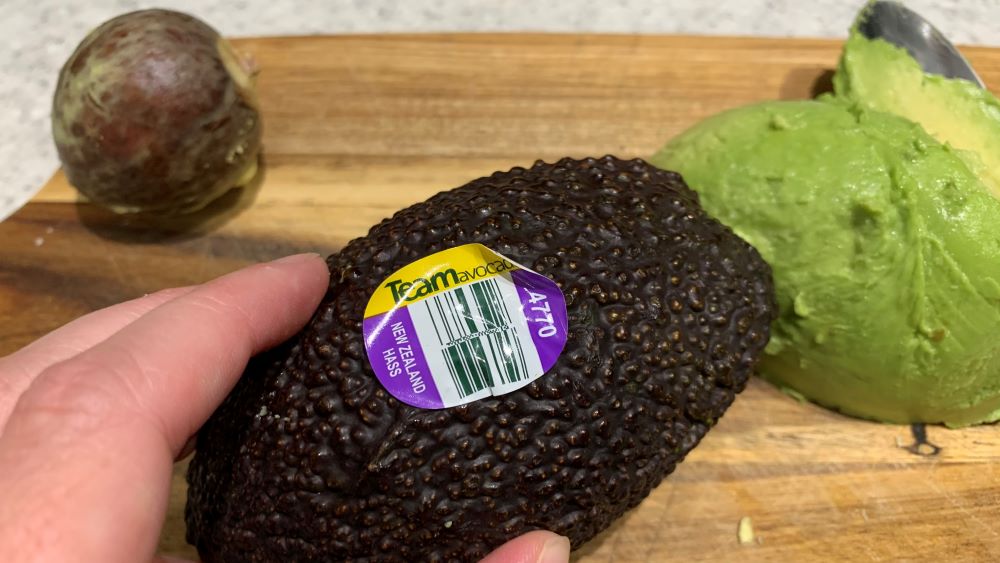
Remove the sticker from your avocado before putting it in your compost bin. The stickers will be made from plastic and will not break down completely in your compost. They will add plastic particles to your compost and soil and they can show up later as you are digging.
2. Cut the avocado skin into slices

Help the avocado skin to break down quicker you should cut it into slices before putting it into your compost bin. Cutting the avocado into slices will increase the surface area allowing soil bacteria and worms more area to come in and break it down.
Avocado skin will break down if you cut it in half or add a whole avocado to the compost bin. The process could take 4-6 weeks for it to break down and the seed will take even longer. It is best to do what you can to help the avocado to break down quicker. This will avoid smells, pests and get you compost sooner.
3. Bring the skin and flesh outside straight away
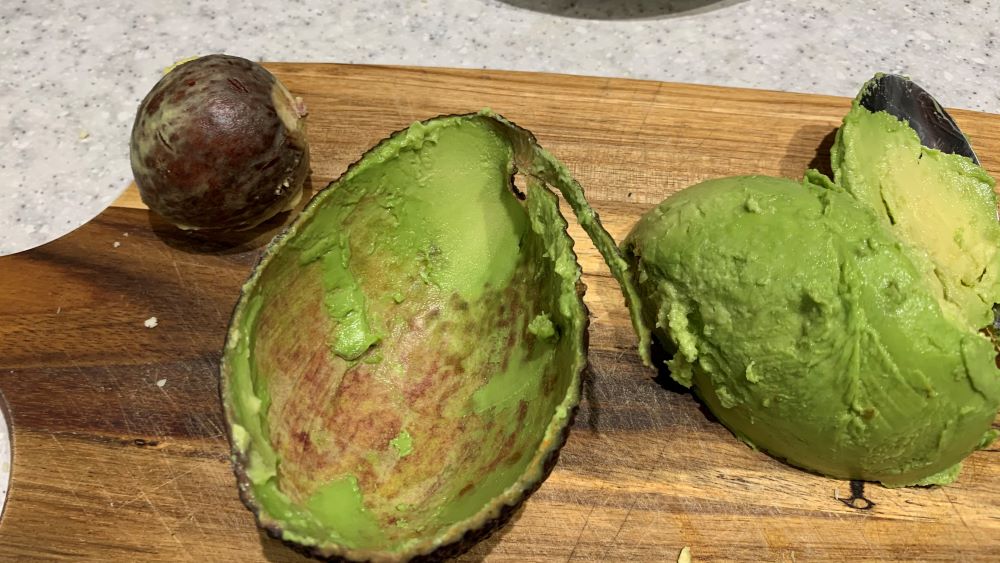
When composting avocado it is best to bring it out to your compost straight away. This is particularly important if you are composting avocado flesh because this can go moldy very quickly. It is much trickier to deal with once it has started to break down so avoid putting it in an indoor compost container and take it straight outside.
3. Bury the seed

You can successfully compost avocado seeds but it is important to bury deep if you don’t want it to sprout. Avocado seeds will sprout easily in your compost bin if you throw them on the surface or if they are only buried a small amount.
Dig the avocado seed in at least 4-5 inches to avoid it sprouting. If the avocado seed does still manage to sprout then you can dig it back into the compost and it will break down. Once the sprout has come out of the seed, it will have used up most of the nutrients in the seed which will help it to break down quicker.
Avocado seeds are tricky to transplant so it is best to plant them into a pot if you are planning on growing them rather than sprouting them in your compost bin.
You can break the seed before putting it into your compost bin if you like but take care. The seeds are hard and you don’t want to hurt yourself. You can grate the seed when it is soft into small pieces which will help it to break down even quicker. These small pieces are perfect for the compost but it can be tricky to grate the seed so take care.
4. Cover the skins and flesh with compost material

It is important to cover the skins and flesh after you have added them to your compost bin. I like to take a small trowel and scrape back the surface of the compost. I then sprinkle in my avocado pieces and cover them with the compost.
You can also add the avocado pieces and mix them in with a compost stirrer or garden fork. This will mix all the green and brown materials together and help them to break down quickly. Mixing the ingredients in your compost is a great way to help it to break down as quick as possible.
Avocado skin and flesh will only take 4 weeks to break down if they are cut into small pieces and mixed in.
5. Add extra brown material
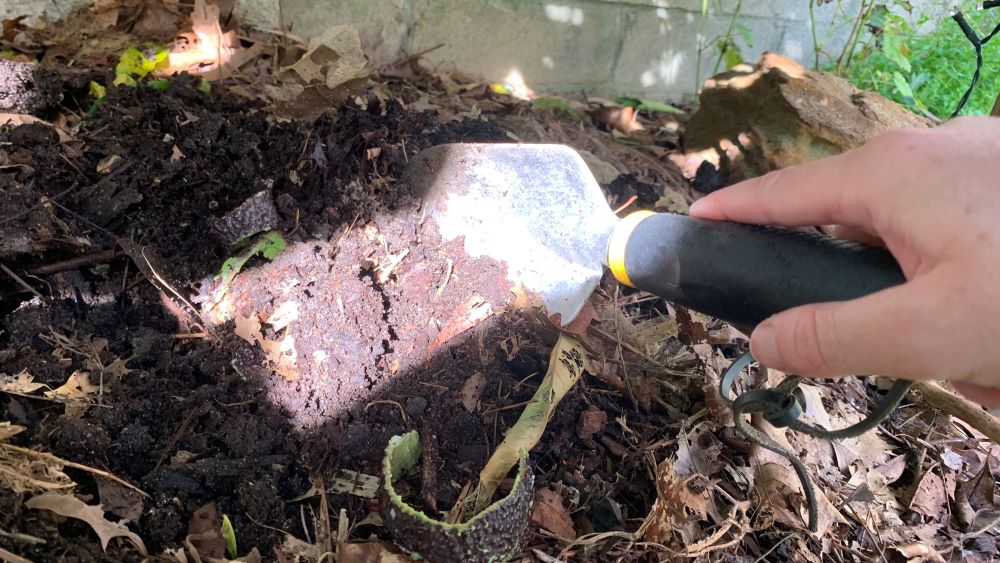
Avocado flesh is considered green material and contains a lot of water. To balance this out it is a good ideal to add a couple of handfuls of extra brown material like straw, hay or dry fall leaves. These help to absorb the water and keep your compost in balance. A good ratio is 1 part green material to 3 parts brown material.
Avocado skin and dry seeds are brown materials, adding less water and lots of carbon. These will help to balance the water level in your pile. If you have left lots of flesh on your avocado skin then you can attract flies and ants and add extra water so it is always best to add brown material over the top.
The easiest way to do this is to scrape brown leaves over the top, compost material that hasn’t broken down or some straw.
How to compost avocado seeds
Avocado seeds can be added to your compost whole or grated. The seeds will take a lot longer than the skin and flesh to break down but they will eventually. If you can break the seed or grate it then it will be even quicker.
Avocado seeds can sprout if they are thrown into the top of your compost or are only just covered with compost material. You can dig any sprouting avocado seeds back into your compost and the seed and sprout will break down.
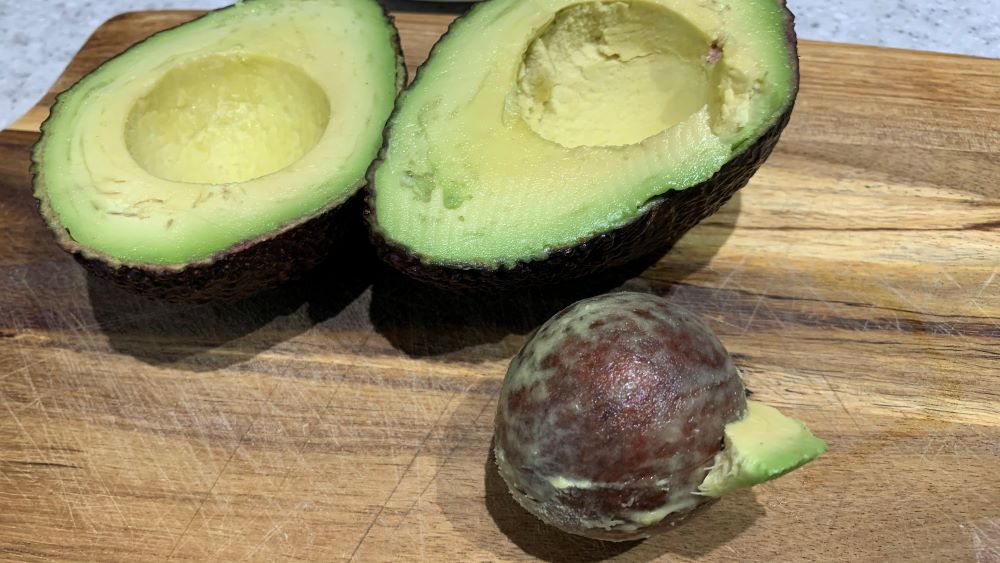
Composting avocado skin
Avocado skin can be composted in a pile or bin and will break down quickly if it is cut into small pieces. I like to cut avocado skin into ½ inch slices and mix them through my compost. Using this method they will break down completely in 3-4 weeks if you have a well-balanced compost that is kept moist.

Composting avocado flesh
Avocado flesh can attract ants to your compost so always bury it in the compost material. I like to gently dig it in with a trowel making sure that the flesh is completely covered. Putting your compost bin lid on will help or you can sprinkle some dry material like hay or straw on top.

Composting Avocado | Summary
Avocadoes are a great ingredient to add to your compost bin. Take care not to add too many avocadoes in one go otherwise your compost will become too wet and can attract ants and flies. Avocado will add valuable nutrients and carbon to your compost bin and composting will save it heading to landfill.
Happy composting.
I am an accredited practicing dietitian, experienced gardener and a dedicated cook. I love writing and sharing my experience so you can learn from my successes and mistakes.
